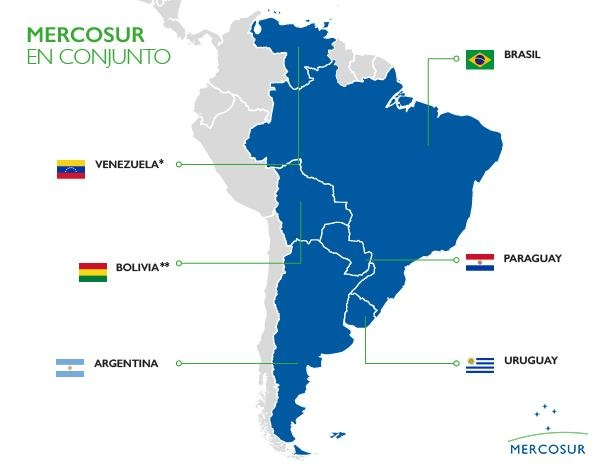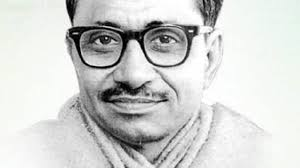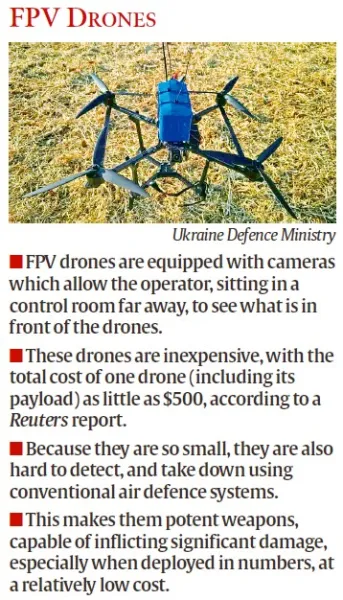Polity
How is the President's Rule imposed?- The Hindu
A delegation of 10 MLAs from the Manipur Assembly met the Governor of the State and pressed for the formation of a viable government in Manipur that has been under President’s Rule since February 2025
What is President’s Rule
- President’s Rule refers to the suspension of a state government and the direct administration of the state by the central government under Article 356 of the Indian Constitution.
- It is imposed when a state fails to function according to constitutional provisions, often based on the Governor’s report or non-compliance with Union directives under Article 365.
- The proclamation must be approved by both Houses of Parliament within two months and can continue for six months at a time, up to a maximum of three years.
- Unlike India, countries like the U.S. and Australia do not have provisions for removing state governments.
Court's Ruling
- Initially, courts avoided questioning the Centre’s decision to impose President’s Rule. However, the landmark S.R. Bommai case (1994) changed this by restricting misuse of Article 356, stating it should be used only in case of a breakdown of constitutional machinery, not mere law and order issues.
- The Supreme Court made the President's Rule subject to judicial review and ruled that state assemblies must be kept in suspended animation until Parliament approves the proclamation. Since then, courts have actively curbed arbitrary use of Article 356, as seen in cases like Bihar (2005), Uttarakhand (2016), and Arunachal Pradesh (2016).
Constitutional Provisions Related to President’s Rule
|
Article
|
Subject Matter
|
|
Article 355
|
Obligation of the Union to protect States from external aggression and internal disturbance
|
|
Article 356
|
Provisions for imposing President’s Rule due to failure of constitutional machinery in a State
|
|
Article 357
|
Allows the Union to exercise legislative powers on behalf of the State under Article 356
|
|
Article 365
|
Enables action if a State fails to follow or implement directions from the Union government
|
International Relation
India, Paraguay can expand trade with MERCOSUR, says PM Modi- The Hindu
Paraguay’s President Santiago Peña visited India and held bilateral talks with Prime Minister Narendra Modi, focusing on strengthening economic ties and expanding cooperation within the MERCOSUR trade bloc. The visit highlights India's efforts to deepen ties with Latin American countries amid global shifts in trade dynamics.
Key Points:
- High-Level Visit: This was President Santiago Peña’s first official visit to India.
- Strengthening Ties: Both leaders agreed to deepen strategic and economic cooperation, especially in emerging sectors.
- Focus Areas: Cooperation was explored in digital technology, critical minerals, energy, agriculture, healthcare, defence, railways, and space.
- MERCOSUR Engagement: PM Modi emphasized expanding India’s Preferential Trade Agreement (PTA) with the MERCOSUR bloc (Brazil, Argentina, Paraguay, Uruguay).
- Strategic Value: Paraguay views India as a “key strategic partner” due to India’s global technological leadership and market potential.
- Natural Resources: India is interested in Paraguay’s mineral wealth, making it a potential regional partner in resource security.
- Diplomatic History: Diplomatic ties date back to 1961; India opened its embassy in Asunción in August 2022.
- Geopolitical Context: Paraguay’s neutral foreign policy and stable diplomacy increase its appeal as a partner for India in Latin America, amid regional influence from Brazil and Argentina.
About MERCOSUR (Southern Common Market)
- Formation: Established in 1991 via the Treaty of Asunción to promote economic integration and free movement of goods, services, and people among member states.
- Members:
- Founding: Argentina, Brazil, Paraguay, Uruguay
- Later Joined: Venezuela (suspended since 2016), Bolivia (accession pending ratification)
- Governance: Led by the Common Market Council, the bloc’s top decision-making body for coordinating economic and foreign policy.
- Languages: Spanish and Portuguese (official)
- India Ties: Signed a Preferential Trade Agreement (PTA) with MERCOSUR in 2004 to enhance trade and economic relations.
- Headquarters: Montevideo, Uruguay

History
60th anniversary of Pandit Deendayal Upadhyaya Ji's philosophy of ‘Integral Humanism- PIB
Union Minister of Agriculture and Farmers Welfare, Shri Shivraj Singh Chouhan addressed the National Memorial Symposium in New Delhi to mark the 60th anniversary of Pandit Deendayal Upadhyaya’s philosophy of ‘Integral Humanism’.
What is Integral Humanism?
Integral Humanism, propounded by Pandit Deendayal Upadhyaya, advocates a holistic approach to human development by integrating material, mental, intellectual, and spiritual dimensions of life.
Key Principles:
- Balanced Human Development:
Emphasizes the comprehensive growth of individuals—not just economic or material well-being, but also mental, moral, and spiritual upliftment.
- Critique of Western Ideologies:
- Capitalism is criticized for promoting unchecked individualism and economic exploitation.
- Marxist Socialism is rejected for its materialistic outlook and suppression of personal freedom.
- Indian Philosophical Framework:
Unlike the Western focus on Artha (wealth) and Kama (desire), Integral Humanism stresses the need to include Dharma (duty) and Moksha (liberation) for complete fulfillment.
- Human-Centric Governance:
Places the individual at the center of all policymaking—emphasizing dignity, welfare, and the moral purpose of life in governance.

Contemporary Relevance of Integral Humanism
- Participatory Governance: Advocates decentralized, value-based governance rooted in local traditions and customs.
- Self-Reliant Economy (Swadeshi): Emphasizes village-centric, sustainable development aligned with Gandhian Gram Swaraj.
- Antyodaya & Policy Making: Focuses on uplifting the most marginalized, making welfare a moral duty, not just policy.
- Sustainable Development & Environmental Justice: Calls for balanced use of resources ensuring dignity and sustenance for future generations.
- Cultural Preservation: Encourages revival of India’s heritage and wisdom as a foundation for innovation.
- Global Relevance: Presents an alternative to capitalism and communism, resonating with Global South development and concepts like Gross National Happiness.
- Ethical Values: Promotes compassion, restraint, and harmony, reflecting Indian ideals like Vasudhaiva Kutumbakam, Sarvodaya, and Ahimsa.
Environment
Government Notifies Guidelines for Scheme to Promote Manufacturing of Electric Passenger Cars in India- PIB
The Government of India, under the leadership of Prime Minister Shri Narendra Modi, has notified detailed guidelines for the Scheme to Promote Manufacturing of Electric Passenger Cars in India (SPMEPCI). This scheme aims to boost domestic production of electric vehicles (EVs), attract global investments, generate employment, and position India as a leading global manufacturing hub for electric passenger cars.
About the Scheme
- Objective: To promote domestic manufacturing of electric passenger cars with a focus on sustainable mobility, net-zero emissions by 2070, economic growth, and environmental protection.
- Administered by: Ministry of Heavy Industries (MHI).
- Key Features:
- Encourages fresh investments from global EV manufacturers with a minimum committed investment of ₹4,150 crore (approx. USD 500 million) over 3 years.
- Approved applicants can import Completely Built Units (CBUs) of electric 4-wheelers (e-4W) at a reduced customs duty of 15% (minimum CIF value of USD 35,000) for 5 years, capped at 8,000 units per year.
- Domestic Value Addition (DVA) targets: Minimum 25% DVA within 3 years and 50% within 5 years.
- Compliance backed by a bank guarantee equivalent to duty foregone or ₹4,150 crore, whichever is higher.
- Investment eligible for counting includes new plant, machinery, equipment, utilities, R&D, and charging infrastructure (up to 5% of investment).
- No upper limit on investment, but applicants must begin manufacturing operations within 3 years of approval.
DEFENCE
Ukraine’s Trojan horse attack - The Indian Express
Ukraine launched an unprecedented, long-range drone offensive—dubbed Operation Spider Web—deep into Russian territory, including strategic air bases up to 4,000 km away in Siberia.

Trojan Horse Attack
- FPV Drones Smuggled: Ukraine smuggled First-Person View (FPV) drones into Russia hidden inside mobile wooden cabins carried by trucks.
- Remote Activation: The cabins’ roofs were remotely opened to launch drones that targeted nearby air bases with precision.
What is Drone Warfare?
Drone warfare refers to the use of unmanned or remotely operated vehicles in military operations across air, land, sea, or underwater domains. These drones may be manually controlled or function autonomously using auto-pilot systems. The complete setup, known as a Remotely Piloted Aircraft System (RPAS), includes the drone and its ground control unit.

Scope of Drone Warfare
- Ukraine’s deep-strike drone attacks showcase the expanded reach and impact of drone warfare.
Such attacks redefine modern combat, enabling strikes far from frontlines.
- Thomas Shugart warns drone swarms could be launched from containers, ships, or trucks.
- Thousands of drones could disable critical air assets like bombers with ease.
- Shugart suggests building hardened shelters for key aircraft to mitigate drone threats.
- The threat model is globally relevant, including for countries like India.
Significance of Use of Drones in Warfare
- Targeted Strikes: Enable precise attacks with minimal collateral damage.
- Lower Risk to Personnel: No pilots involved, reducing human casualties.
- Cost-Effectiveness: Cheaper to build and operate than traditional manned aircraft.
- Real-Time Surveillance: Provide continuous, live intelligence for tactical advantage.
- Asymmetric Warfare Edge: Effective against non-state actors and hard-to-reach targets.